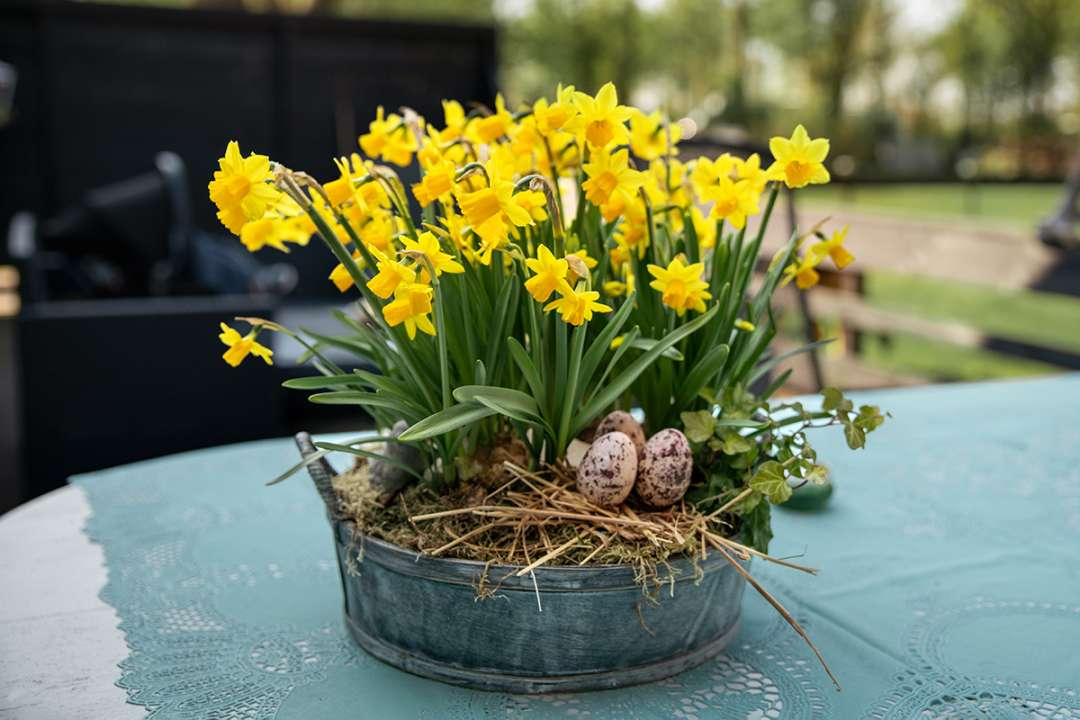Planting Spring Flowering Bulbs: A Blooming Guide for Your Garden
06-09-2023
Spring is a season that brings renewal and fresh beauty to our gardens. One of the best ways to ensure a vibrant and colourful spring garden is by planting spring-flowering bulbs in the fall. These bulbs, once nestled into the earth, patiently wait for the warmth of spring to burst forth in a riot of colours. In this gardening guide, we will explore the joys of planting spring-flowering bulbs and how to do it effectively.

Selecting the right bulbs
Before you get your hands dirty, it's essential to choose the right bulbs for your garden. Tulips, daffodils, crocuses, hyacinths, and snowdrops are popular choices for spring blooms. When buying bulbs, look for those that are firm, free from mould or blemishes, and the appropriate size for the type of flower you desire.
Timing is everything
Planting spring bulbs requires a bit of planning. The ideal time to plant is in the fall, about six weeks before the ground freezes. This gives the bulbs enough time to establish their root systems before the cold sets in.
Selecting the perfect spot
Spring bulbs thrive in well-drained soil and require plenty of sunlight. Choose a location in your garden that receives at least 6 hours of sunlight daily. Ensure the soil is well-drained by adding organic matter like compost.
Planting depth
Each type of bulb has a specific planting depth. Generally, bulbs should be planted at a depth that is approximately three times their height. For example, if you have a bulb that is 2 inches tall, plant it about 6 inches deep.
Spacing matters
Proper spacing between bulbs is essential to prevent overcrowding and ensure proper airflow. For smaller bulbs like crocuses and snowdrops, spacing them about 3 to 4 inches apart is adequate. Larger bulbs like tulips and daffodils should be spaced 6 to 8 inches apart.
Planting technique
When planting bulbs, dig a hole that is deep enough to accommodate the bulb's depth. Place the bulb in the hole with the pointed end facing up. Cover it with soil and gently tamp it down to remove air pockets. Water thoroughly after planting to help settle the soil.
Mulching for protection
After planting, add a layer of mulch to help regulate soil temperature and retain moisture. This extra layer of protection also deters weeds from competing with your bulbs.
Caring for your bulbs
Once your bulbs are in the ground, they don't require much maintenance. Keep the soil consistently moist, especially during dry spells. However, be cautious not to overwater, as this can lead to rot.
Enjoy the fruits of your labour
As winter turns to spring, the magic happens beneath the soil's surface. Bulbs begin to send up shoots and burst into a spectacular display of colour and fragrance. Be sure to take the time to appreciate the beauty of your spring garden, and consider cutting some blooms for fresh indoor arrangements.
Post-bloom care
After the spring blooms have faded, allow the foliage to wither and turn yellow naturally. This process allows the bulb to store energy for the next year's growth. You can plant annuals or other perennials nearby to help conceal the fading foliage.
In conclusion, planting spring-flowering bulbs is a delightful way to usher in the beauty of spring into your garden. With the right selection, timing, and care, you can create a stunning display of colour and fragrance that will bring joy to both you and your visitors every spring. So, grab your gardening tools, and let's make your garden a haven of springtime beauty!
